Valves
Valves are important tools to prevent fluid wastage and problems in construction facilities and industries. The following content provides information on the application, working pressure, operating fluid, and the best price for purchasing all valves.
Valve Expert Buying Guide and Price List
Valves are generally responsible for connecting, disconnecting, and regulating the fluid flow. They have wide and important applications in various industries and facilities.
The type of mechanical valves used in engine rooms are usually gate valves, glove valves, and one-way valves, which are of brass (gear connection) or cast iron (with flange connection) in different sizes.
These valves vary based on a few terms such as size from small plug or clock valves (3.8-inch valves) to larger sizes based on the capacity of the engine room. Other terms are mainly working pressure, working temperature, or even the desired operating fluid in industry and facilities.
Review, Selection, and Pricing of HVAC Equipment
Different Types of Valves
Industrial valves are divided into types of brass, cast iron, aluminum, polymer, etc. Also, according to the size and material, industrial valves can be classified into threaded, welded, flanged, and plastic welded types.
Valves can be divided into manual or automatic in terms of functionality and into electrical (solenoid valves) and mechanical in terms of functionality.
Engine Room Valve Categorization
Engine room valves a divided into the following types in terms of application:
- On/Off Valves (Blocking Valves): Gate - Plate - Butterfly

- Pressure Relief Valves (Safety Valves)

- Adjustable Valves: Needle - Plate - Angle Seat

- One-Way Valves: Ball - Gate

- Air Valves: Double-Hole - Single-Hole

- Plug Valves
Plug valves are used for low flows, they are made in three ways, and washing machine shut-off valves are types of plug valves.
This type of valve consists of a rod in the middle of which a hole has been created for the passage of water, and it is placed in the middle of a chamber that is machined and polished on its inner surface. These types of valves, like gate valves, create very little resistance to water flow.
To open and close a plug valve, turn the handle 90 degrees. Usually, plug/clock valves are used as a two-mode (off/on) control device, because:
- They are relatively inexpensive.
- They remain in the same position when adjusted.
- Users can see whether they are open or closed.
If the area of the orifice is equal to the cross-sectional area of the pipe, the efficiency of the plug valve as a flow control device will be reduced.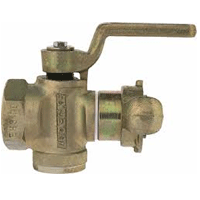
- Globe Valves
The name of globe valves is derived from the external shape of its body, which is spherical, and its internal structure is such that the liquid changes direction by 180 degrees from the point of entering the valve to its exit.
The construction of the valve and its seat is such that as soon as the flow is established, their contact is cut off. Also, not fully opening the ball valve does not cause it to wear out, and therefore it can be used to regulate and control the flow.
The proportionality of the number of turns of the valve handle with the volume of the liquid outlet channel makes it easy to adjust the flow amount by hand.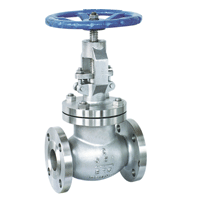
DamaTajhiz: Thousands of products for thousands of projects (since 2004)
Specifications of Globe Valves
The following are the specifications of globe valves:
- The direction of the fluid flow changes (unlike the slide valve).
- Changing the direction of fluid flow creates turbulence.
- Turbulence increases pressure drop.
- In the globe valve, the pressure drop is higher than the sliding valve.
- In the globe valve, as soon as the end plate of the stem and the seat are disconnected, the fluid flows completely.
- In the globe valve, the wear is much less than slide valves due to less friction
One of the types of globe valves is the angle ball valve, in which the fluid direction change is less than the normal ball valve and the fluid turbulence in the angle globe valve is less than the normal globe valve.
Finally, about ball valves, it should be said that this type of valve is designed for fluid control, and due to the sudden change in the fluid path, opening and closing the valve is done faster.
At the same time, it should be mentioned that different materials used in their construction are available and their repairs are less and easier than sliding valves, so their repairs can be done without removing them from the piping route. The valve is often made of nickel or stainless steel.
- Angle Valves
This type of valve is the same as the ball valve, with the difference that there is a 90-degree angle between its inlet and outlet. This type of valve creates less pressure drop compared to the ball valve, and because of its special shape, the consumption of plumbing connections and the time required for installation are also saved.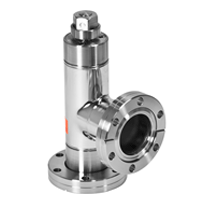
- Ball Valves
These types of taps are also called impact taps. The water flow in this type of valve passes through the hole of a spherical ball which is located in a completely polished spherical position.
To open and close this type of valve, just like a plug valve, only a 90-degree rotation of its handle is enough. These valves also create a little resistance against the flow of water. This type of valve can be used in hot and cold water piping as well as low-pressure gas piping.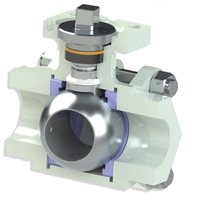
- Gate Valves
Gate valves are mostly used in places where they want to completely close or open the fluid flow.
One of the properties of these valves is the low-pressure drop along them, for this reason, these valves are used in long pipes. When the drawer or gate is completely directed up and out of the way of fluid flow, and as a result, there is no resistance to flow, but if the drawer is directed to its lowest position, as a result, the fluid changes due to The path, and collision with the drawer causes turbulence and pressure drop.
In plumbing, pipes, and valves are often connected (by welding or by screws), but in general, the valve and pipe are connected by flanges and bolts, and to prevent leakage between the pipe and the flange, the valve is sealed. or a gasket is placed.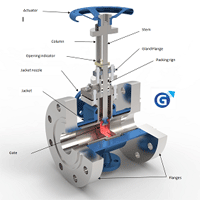
- Backwater Valves
These types of valves are only used in sewage piping and they work exactly like free one-way valves. In situations where, due to various reasons, sewage returns to the building's sewage inlets, these valves prevent this action.
These types of valves are usually installed in places such as the basement of a building that is a little higher than the sewage disposal site, to prevent the return of sewage.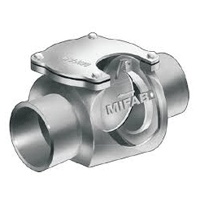
- One-Way Valves (non-return or check valves)
Check valves are used to prevent the return of liquid or gas sent to the destination.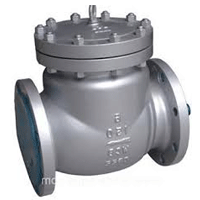
The reasons for using one-way valves in industry and household appliances are as follows:
- In houses, they put water on the entrance to the building so that in case of a water cut, the amount of water stored in the household appliances and inside the pipes does not return to the main pipe.
- They place it on the inlet pipe of the water heater so that the water stored in the water heater tank does not empty due to a water cut or a broken pipe inside the building because the furnace may continue to work and cause the water heater to burn.
- In the refineries, a one-way valve is placed on the output pipe of the pump, which cannot return after transferring the necessary amount of oil materials and closing the pump or emergency shutdown of the pump, because as a result of returning, in addition to wasting the energy used to send it, the receiving party may also face an immediate shortage of materials.
More importantly, the pressure of the return liquid that goes through the same path may be reversed, and as a result, the centrifugal pump rotates at an increasing speed, and the speed becomes so high that the pump is overheated. fall and even explode. - The way they work is that the liquid or gas pressure raises the valve and causes the liquid or gas to pass until the pressure under the valve is greater than the pressure on it, the valve remains open and the liquid or gas continues to pass.
If for any reason the pressure under the valve becomes lower than the pressure on it, the weight of the valve itself and the pressure of the materials that are going to return will cause the valve to close and prevent the materials from returning.
- Needle Valves
The needle valve, which takes its name from the shape of the disc and its seat, is part of the ball valve family in terms of structure and operation, and with these valves, you can establish precise control of fluid flow, especially in narrow and delicate pipes.
The structure of this valve is such that the flow is directed to a small hole and after turning 90°, it is directed to the tip of a cone, and as can be seen from the figure, the flow goes to the outlet between this hole and a needle-shaped piece.
The disk of this type of valve consists of a thin conical rod that passes through the circular hole of the plate and restricts the flow of fluid movement.
It should be noted that the construction of these valves is mostly used in carburetors. This type of valve is very delicate and almost small in terms of construction and is used in sensitive and precise operations due to its reliable mechanism. It is widely used in oil or petrochemical laboratories and precision instruments.
The diameter of needle valves usually does not exceed 2 inches, and needle valves are mostly used in places where restrictions are necessary, and the meaning of restrictions is a time delay and slow pressure change.
- Drain Valves
The drain valve is mostly installed in the boiler and is installed in the lowest part of the boiler, and if necessary, by using it, they drain the sediment mass and other impurities that settle. - Cross Globe Valves
The purpose of using this type of valve is to control the temperature of the fluid exiting the three-way mixing valve, which always connects the two ways.
This valve can be installed in a main route and the third side of it can be connected to a branch, and it can be used to regulate the amount of water passing to the branch. The performance of three-way mixing and dividing valves is different from each other.
In three-way mixing valves, two flows are mixed and create a common flow. While in the three-way divider valves or the side of the flow passage, to control the temperature, a fluid flow is divided into two parts. In some applications (for example, cooling tower control), bypass or divider valves should be used instead of mixing valves. - Hose Valves
These faucets are used for watering gardens and green spaces and are made in diameters of 1.2, 3.4, and 1 inch. - Gauge Valves
These taps are used in glass fountains to connect and disconnect the water and the fountain. - Special Purpose Valves
In some applications, special valves are used, for example, four ways for water circulation in the boiler ring. A type of four-way valve is also used as a status change valve in the cooling system.
By using valve type in heat pump systems, the role of the evaporator is replaced by the condenser. Floating valves are another type of special valves that are used to feed water to a tank with a source or in special cases as a boiler feed valve.
DamaTajhiz; Guide to Selection and Pricing of HVAC and Building Facilities Equipment (Since 2004)
Buying Valves
The purchase of valves should be done according to the working pressure, working temperature, or even the desired working fluid in the industry and facilities.
Therefore, to easily choose and buy engine room valves, you must determine all these things first.
On the site of Damatajhiz HVAC Group, technical information on dozens of models of all kinds of engine valves, from reputable brands with original warranties, has been presented for you, dear ones, to enjoy the good feeling of optimal and smart shopping.
The Price of Valves
You can check all types of engine room valves at the best price for the best choice on the Damatajhiz website.
The price of engine faucets varies according to the variety of models and brands available in the market, it should be noted that the prices presented in the Damatajhiz HVAC Group are up-to-date and the discounts desired by consumers have been included in these prices.
So that these prices also include the part guaranteeing the best prices on the Damatajhiz site.
Dear user:
While thanking you for your trust in the technical opinions of temperature equipment sales experts, it should be noted that the buyer ultimately determines and selects the desired product brand based on history, brand strength, service, and product price.
But in the case of engine valves, most users and buyers choose and buy best-selling brands according to their quality, price, and after-sales service.
If, after reading the above material, you have more questions about deciding on the purchase of various types of valves for the engine room, you can get advice from the heating equipment and engine room sales experts after contacting the temperature equipment collection and extension numbers 107-108-121-122. and ask your questions.
"Knowledge Fuels Better Choices"
Registered Trademark and Stewardship Business Licenses Issued by the Union of Virtual Business Association and the HVAC Equipment Industry.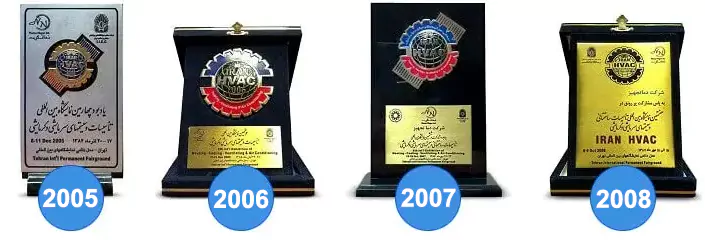
DamaTajhiz HVAC Participation at International HVAC and Construction Facilities Exhibitions Demonstrates its Global Reach and Commitment to the Industry.
We Look Forward to Your Call and the Opportunity to Meet With You
SHARE THIS CONTENT TO SPREAD THE KNOWLEDGE
| |
Head Office: No. 463,Talebian Alley,Taleghani St.Tehran,Iran


DamaTajhiz has provided the opportunity to sell and ship specialized HVAC equipment for applicants in the following countries as the first and the most popular online store for selling HVAC equipment (Heating , Ventilation , Cooling , Air conditioning) in the Middle East : Afghanistan – Tajikistan - Uzbekistan – Turkmenistan – Azerbaijan – Armenia – Georgia – Turkey – Iraq – Syria – Jordan – Kuwait – Emirates – Qatar – Oman.
